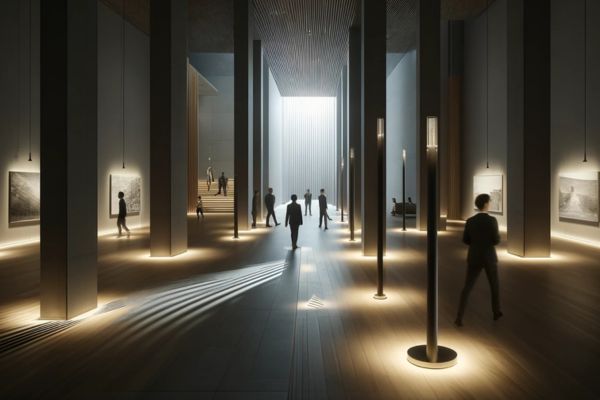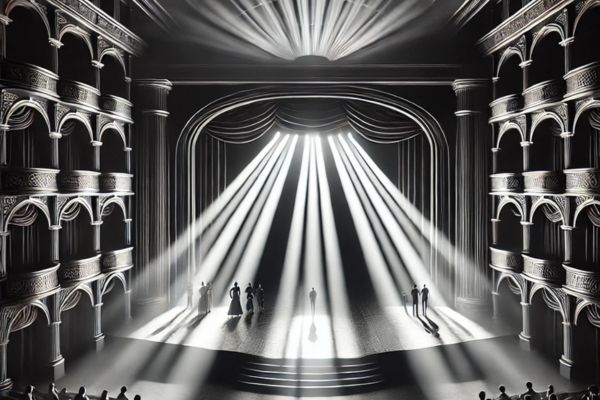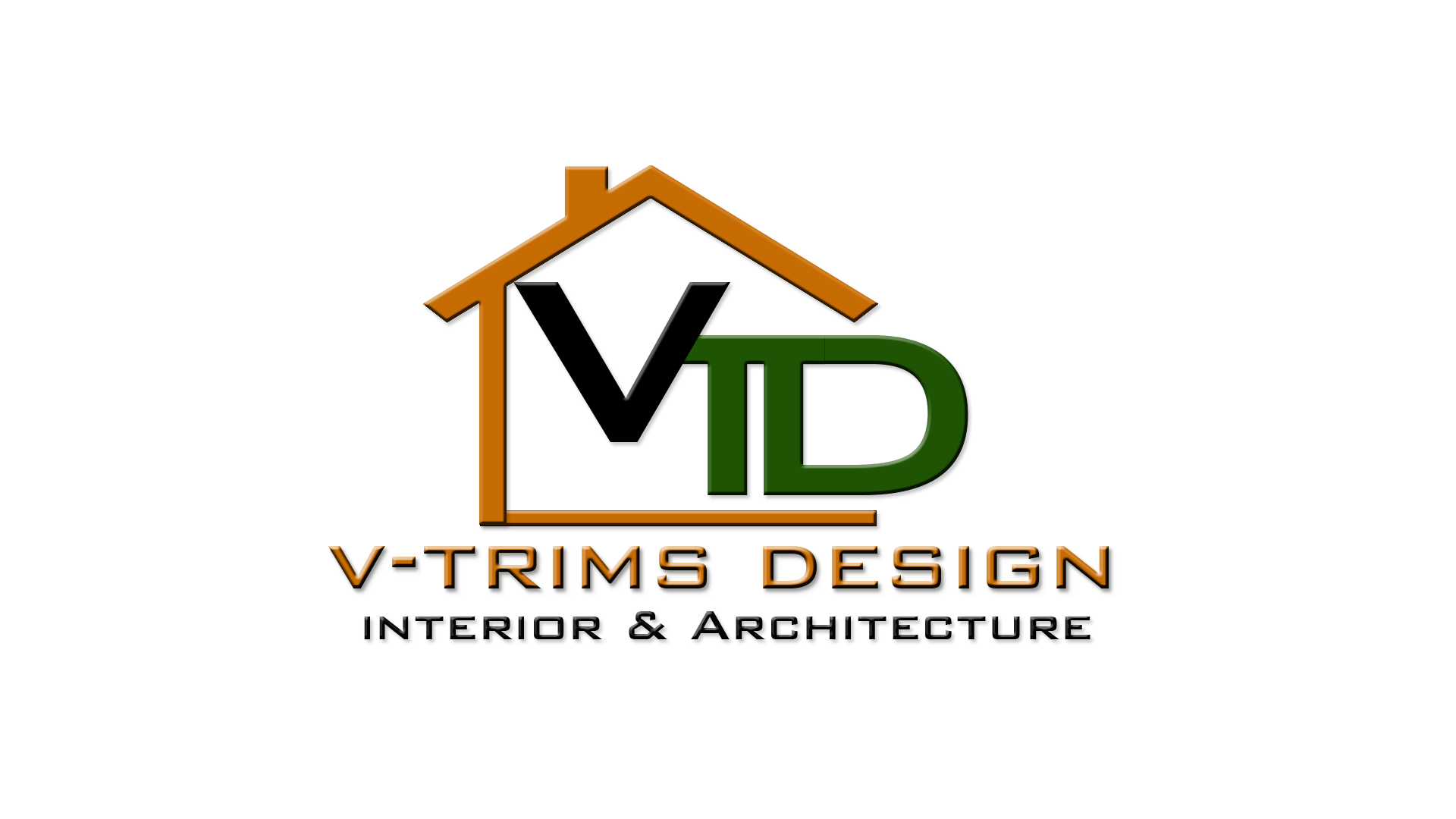NIKHIL GAMING.
2 months ago

Lighting is often an unsung hero in architectural design. While people admire the structure, materials, and layout of a building, the way light interacts with these elements is what truly brings a space to life. Whether it’s a cozy café, a grand museum, or a sleek office building, lighting in architectural design plays a pivotal role in setting the mood, directing attention, and creating drama—just like stage lighting in a theater.
Architects and designers use lighting to shape experiences, much like how theater directors use it to tell a story. Imagine walking into a dimly lit restaurant where warm light pools over each table, making conversations feel intimate and personal. Now, compare that to stepping into a corporate headquarters with bright, cool-toned lighting that promotes alertness and focus. Each lighting choice is intentional and transforms how we perceive and interact with a space.

Theater productions rely on lighting to evoke emotions—soft blues and purples can create a melancholic or dreamy atmosphere, while reds and oranges bring warmth and energy. Similarly, in architectural design, lighting sets the tone for an entire environment.
Consider luxury retail stores. The lighting is often warm and focused, highlighting products while creating a premium feel. In contrast, hospitals use bright, uniform lighting to ensure functionality, hygiene, and safety. This demonstrates that lighting isn’t just about visibility—it’s about shaping how a space feels.
Architects masterfully blend natural and artificial lighting to achieve the desired ambiance. Natural light, streaming through strategically placed windows or skylights, brings warmth and vitality. In contrast, artificial lighting allows for controlled illumination, ensuring consistency and reliability.
For example, museums often use a combination of both. Natural daylight highlights textures and materials, while track lighting focuses on exhibits, ensuring artwork is both illuminated and protected from harsh light exposure. This delicate balance enhances the visitor experience, just as a theater production carefully times spotlight transitions to enhance a scene.

Just as stage lighting directs an audience’s focus to key moments in a performance, lighting in architectural design guides people through a space. Well-placed lighting can subtly nudge people toward entrances, highlight important architectural features, and ensure seamless navigation. Museums, for example, use focused lighting to draw attention to specific exhibits, ensuring that visitors follow a desired path of exploration.
A well-lit space often features layers of lighting that work in harmony:
Think of a grand hotel lobby with a stunning chandelier. That chandelier is not just a light source; it’s a centerpiece. Similarly, in theaters, key lighting elements ensure that the audience’s attention is exactly where the director wants it. The same principles apply in restaurants, offices, and homes—lighting directs movement and highlights what matters most. Retail environments also rely on this concept, using well-placed lighting to guide shoppers toward premium products and promotional displays.

Theater lighting creates visual depth, building drama through contrast. Bright beams against dark backgrounds highlight actors and set pieces, evoking emotion and intrigue. Architectural design follows this exact philosophy. The balance between light and shadow not only defines space but also adds an element of mystery, elegance, and drama.
Light and shadow play a crucial role in adding depth and dynamism to architecture. A well-lit staircase with subtle backlighting can appear to float, while a softly lit corridor opening into a brightly illuminated atrium creates a sense of revelation and surprise.
Take Gothic cathedrals, for instance. The interplay between dim interiors and the ethereal glow of stained-glass windows creates a breathtaking, almost spiritual experience. Similarly, in modern skyscrapers, strategic lighting enhances the sleekness of glass facades, making them shimmer against the night sky. Even in residential design, dramatic lighting effects can transform a space—think of a cozy living room with layered lighting that enhances comfort while providing visual interest.
In both architecture and theater, lighting can change to reflect different moods and times of the day. Smart lighting systems now allow for adaptive illumination—think of office spaces that adjust brightness based on natural light availability, much like how stage lighting shifts as a play progresses.
Hotels, for example, use tunable LED systems that transition from bright white during business hours to warm amber tones in the evening, mimicking the natural rhythm of daylight. This not only enhances comfort but also supports circadian rhythms, improving well-being. Similarly, in restaurants, dynamic lighting systems can transform the ambiance from casual daytime dining to an intimate evening experience, ensuring versatility in the space’s function.

With advancements in technology, lighting in architectural design is more innovative than ever. LED technology, energy-efficient solutions, and smart automation are revolutionizing how spaces are illuminated. From interactive lighting displays in urban landscapes to customizable residential lighting systems, the possibilities continue to expand.
Sustainability is a growing focus in architectural design. Designers are integrating solar-powered lighting, motion sensors, and energy-efficient LEDs to reduce environmental impact while maintaining aesthetics. Imagine a theater that adjusts lighting based on audience presence—now apply that to smart homes and offices, where lighting adapts to occupancy and daylight levels.
Lighting is also evolving to be more human-centric, prioritizing well-being. Studies show that exposure to the right lighting at the right times improves mood, productivity, and even health. Offices, for instance, are now incorporating circadian lighting that mimics natural daylight patterns, much like how a stage production uses lighting cues to align with the emotions of a scene.
Whether on stage or in architecture, lighting is a powerful tool that transforms spaces and experiences. It sets the mood, directs attention, and creates drama—bringing designs to life.
At V-Trims Design, we understand the intricate balance between functionality and artistry in lighting. Our team specializes in crafting lighting solutions that enhance architecture, ensuring every space tells its own unique story. Let’s illuminate your vision together—contact us today to explore how we can bring your architectural projects to life with exceptional lighting design.
5 months ago
VTRIM Design isn’t just designing buildings — they’re designing experiences, stories, and lifestyles. Highly recommended for anyone who values quality, aesthetics, and integrity in architecture.
6 months ago
Gajab ke designer h mera ghar bnaya h jabse roz dekh ke unhi ko yad krta hu kya bnaya h.
6 months ago
Best architecture firm in Lucknow. Exceptionally good in terms of designing and service standards. Professionalism and dedication towards each project is outstanding. I Wish them great success in future. Highly recommended go for v-Trims design
6 months ago
VTRIM Design isn’t just designing buildings — they’re designing experiences, stories, and lifestyles. Highly recommended for anyone who values quality, aesthetics, and integrity in architecture.
6 months ago
Best interior designer in lucknow and best creativity work in interior design
6 months ago
I'm painter and i have been working for long time with v-trims design . This fir is done many attractive projects
6 months ago
"VTRIMS Design truly listens to your needs and offers creative solutions. Their team is very responsive and skilled. Highly professional."
6 months ago
Excellent company.The team is young,talented,and very passionate about design
6 months ago
"If you're looking for modern and elegant interiors, VTRIMS Design is the go-to place. Loved their approach, especially the 3D visuals before execution."
6 months ago
⭐⭐⭐⭐⭐ "From concept to completion, everything was handled with perfection. The team is young, talented, and very passionate about design."
6 months ago
⭐⭐⭐⭐⭐ "Loved working with them! My kitchen and dining space look like something out of a magazine. Superb craftsmanship."
6 months ago
It's nice company work is very fast trustable company Clint always happy interior design so attractive and amazing team all good❤️❤️
6 months ago
⭐⭐⭐⭐⭐ "Very professional team! They handled my 3BHK interior project beautifully. Timely delivery and unique designs. Thank you VTRIMS Design."
6 months ago
"Very professional team! They handled my 3BHK interior project beautifully. Timely delivery and unique designs. Thank you VTRIMS Design."
6 months ago
"Brilliant design, smooth execution and a truly professional team. They turned our vision into a beautiful, functional space we know call home . Highly recommended! "
6 months ago
V Trims is a firm with young and dynamic Architects who are very innovative in designing. They make very good looking contemporary structures with clean finish
6 months ago
Exceptional creativity and execution! The design team perfectly understood our vision and brought it to life with style and functionality. Professional, detail-oriented, and truly passionate about their work. Highly recommended for anyone looking to elevate their space!
6 months ago
They are doing very well construction finishing as welll best wishes for future endeavours
6 months ago
it's too good . There way of talking there designs everything is totally wonderful you all will like their presentation
6 months ago
First of all thanks for V trims design team provided good quality of work unique design i have batter expression with them this credit total goes to Ar vinod Chauhan sir
6 months ago
Just wanted to say a sincere thank you for all the work you have done for us in creating our amazing new space. We love it and were continually impressed by your professionalism, attention to detail, care and the support you provided us during this project. You made the process so easy for us and we are very grateful.
6 months ago
The man behind V-Trims is wow....Hire & give your dream home or Project a wow !!
6 months ago
Keep it up, you’re doing a great job in building architectures. All the best.
6 months ago
"V Trims Design Company is a game-changer in the architectural design field, delivering innovative and functional designs that exceed expectations. Their expertise and attention to detail make them a top choice for any design project."
6 months ago
"Highly impressed every detail reflected thoughtful design and quality craftsmanship.
6 months ago
"Highly impressed with their creativity and professionalism! Good working company... 💪
6 months ago
"Highly impressed with their creativity and professionalism! The team delivered a perfect blend of aesthetics and functionality. Every detail reflected thoughtful design and quality craftsmanship.
6 months ago
Every detail, from the foundation to the finishing, shows top-notch craftsmanship of V-Trims Designs.
6 months ago
"Very professional team! They handled my 3BHK interior project beautifully. Timely delivery and unique designs. Thank you VTRIMS Design."
6 months ago
V-trims Design (Architectural & Interior Design) deals all types of building design, interior design, survey, layout plans for plottings. They provide best quality service at affordable price in U.P.
6 months ago
V-Trims provides exceptional service with a team that's responsive and professional. Their attention to detail and commitment to quality make them a top choice for Architect and interior design.
6 months ago
The firm and its supporting team are genuinely sincere and dedicated.
6 months ago
A really great firm with amazing designs with state of the art features. Decent cost and one of the most disciplined and dedicated team an individual as a client can ask for with very smooth execution.
6 months ago
Sir your work is very beautiful The interior design you have done is beyond comparison. The elevations you have made, the plantation you have done and your team working is very good. I pray to Allah that you get a lot of success.
6 months ago
The trendsetting and innovative architectural capabilities of Vinod and his team set them apart as leaders in the industry.
6 months ago
They managed the project effectively, keeping us on schedule and within budget." or "We were particularly impressed with their ability to adapt to unexpected challenges." "They skillfully addressed any challenges that arose during the project, finding creative solutions."
6 months ago
One of the best architect firm in lucknow There is a lot of cleanliness in their work, all the staff is experienced and well trained, I will always recommend V trims to everyone
6 months ago
"From concept to completion, everything was handled with perfection. The team is young, talented, and very passionate about design."
6 months ago
Very good experience with v-trim team and good supportive team for all the movement to built your dream home...Thanks v-trims ...🙏🙏
6 months ago
Top best Architect for lucknow please contact to V trims Design for every type of Buildings design & Interior/Exterior designing......
6 months ago
Here's a 5-star rating review for V-Trims Design | Architect & Interior: ⭐⭐⭐⭐⭐ Exceptional Design and Professionalism! I had an amazing experience working with V-Trims Design. Their attention to detail, innovative ideas, and seamless execution truly set them apart. From the initial consultation to the final touches, their team was professional, creative, and responsive to every need. They transformed my space into something both beautiful and functional, exceeding my expectations in every way. Highly recommended for anyone looking for top-tier architectural and interior design services!
6 months ago
"VTRIMS design transformed my home into a dream space! Their attention to details and creativity blew me away . Highly recommended for premium interior design in lucknow .
6 months ago
"VTRIMS Design transformed my home into a dream space! Their attention to detail and creativity blew me away. Highly recommended for premium interior design in Lucknow."
6 months ago
"If you're looking for modern and elegant interiors, VTRIMS Design is the go-to place. Loved their approach, especially the 3D visuals before execution."
6 months ago
Very professional team! They handled my 3BHK interior project beautifully. Timely delivery and unique designs. Thank you VTRIMS Design.
8 months ago
"One of the rare firms that balance creativity, technology, and budget without compromising quality. Absolutely worth it!"
11 months ago
Top-Tier Architectural Expertise in Lucknow! Vtrims Design is undoubtedly one of the best architecture firms in Lucknow, offering innovative and aesthetically stunning designs that perfectly blend functionality with creativity. As a leading architect in Lucknow, their team excels in residential, commercial, and interior design projects, delivering outstanding results tailored to client needs. Their expertise in modern architectural solutions, space planning, and sustainable designs sets them apart. Whether you're looking to design a luxurious home, a contemporary office, or a commercial space, Vtrims Design ensures every project is executed with precision and excellence. If you're searching for a trusted and experienced architect in Lucknow, look no further than Vtrims Design. Their professionalism, attention to detail, and commitment to quality make them the go-to choice for architectural services. Highly recommended!
V-Trims Design is an architectural design and construction company in Lucknow founded by young entrepreneurs with a love of design and the belief that every home should be designed to impress and that every person should have a designer lifestyle.
